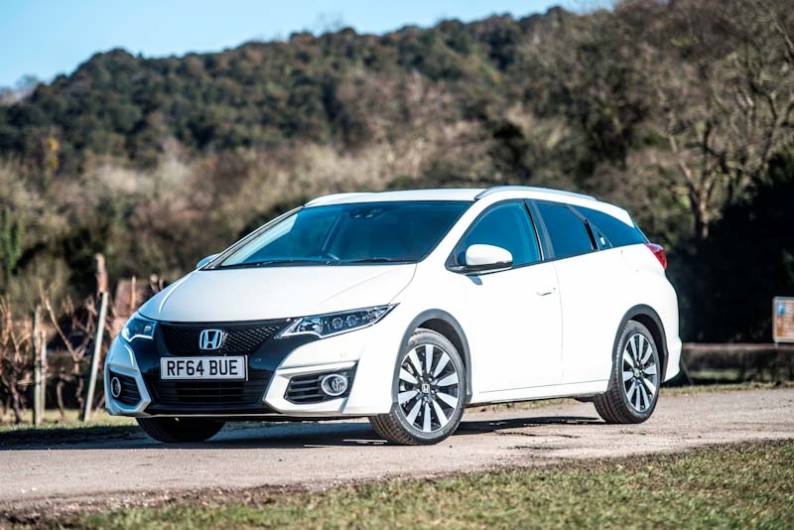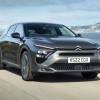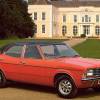
RAC sale – up to 33% off*
• Roadside cover from £5.29 a month†
• We get to most breakdowns in 60 mins or less
• Our patrols fix 4/5 breakdowns on the spot

By Jonathan Crouch
Introduction
With their Civic Tourer estate, launched in 2013, Honda for the first time designed a car in Europe as well as building it there. The result was an unexpectedly effective combination of style and practicality matched to driving dynamics a cut above those of most competing small estates and Crossovers. Especially when matched to peppy but frugal 1.6-litre diesel power. It's a surprising package for the right kind of used buyer.
Models
5-door estate [(1.8 petrol, 1.6 diesel) S, SE, SE Plus, S-T, SR, Sport]
History
On the face of things, the idea of a small estate car doesn't make much sense. Back in 2014, Honda didn't agree, bringing us this car, their Civic Tourer.
At the introduction of this model, this innovative Japanese brand proudly claimed it to be the smallest model of its kind in the Focus-sized family hatch-based 'C-segment', yet it offers more carrying capacity inside than almost all rivals from its era. In fact, we're talking more than you'll get from a Mondeo or Insignia-sized medium range estate from the next class up.
With its Civic, Honda has always championed this same combination of sleek, compact styling and practicality. Despite that, prior to the introduction of this Tourer model, there had only ever been one Civic estate model, the Aerodeck, unveiled in 1998 but deleted from the range in 2001, when the company felt the market was turning towards trendier means of family transport like their own CR-V 4x4. As it turned out, they weren't entirely correct in that supposition. In the first decade of the 21st century, compact estates continued to maintain a small but profitable market niche, provided they could prove themselves to be both practical and stylish. Which meant that Honda quickly realised that it was missing a trick.
Nevertheless, it took until early 2014 for this Civic Tourer to arrive and return its maker to a small estate segment showing gradual but significant signs of growth. It offered something distinctly different in its sector, both in terms of style and practicality. But it remained very much a niche product in the company's line-up and wasn't replaced with the tenth generation Civic hatch was launched in 2017.
What You Get
There's an uncomfortable truth that most of us recognise when it comes to estate cars. Namely that the better looking they are, the worse they turn out to be as load carriers. Boxy and dull always wins when it comes to the cubic litres of carrying capacity - it's an immutable law. Or at least it used to be. What then, are we to make of this Civic Tourer? A car that Honda claims has one of the largest load capacities in its class from its era. Yet at the same time is an elegant, swoopy-looking compact estate that most would see as the most stylish choice in its segment.
Let's cover off the aesthetics first. Up front, there's the same short, rising bonnet you get on the hatch version, with large wheel arches and a distinctive, beaky nose sitting above beautifully detailed lower air intakes. The side view though, is perhaps this car's best angle, with a bold line that runs continuously from the windscreen pillar to the rear lights, creating the impression of a floating roof profile that flows elegantly into the tailgate. Nice detailing includes the same hidden rear door handles you'll find on the MK9 hatch model. And large rear light clusters that wrap around the hatch and are joined by a red bar.
All 235mm of this Civic Tourer's extra length was added at the back, but even with this addition, this car still remains shorter than most of its contemporaries. Which leaves us with the perplexing question of how it can be so spacious inside. How exactly can a little Honda Civic that measures in around 30cms shorter than, say, a huge executive segment Volvo V70 Estate, nevertheless offer a seats-up luggage bay around 10% bigger? The answer's found in magic - or Magic Seats, to be more specific. Let us explain.
Most estate cars would offer their owners a lot more space if more could be done with the siting and flexibility of their back seats. That usually isn't possible because these are normally situated right on top of the fuel tank. Here though it's different. The fuel tank has been moved frontwards and as a result, the floor level can be dropped and the rear chairs freed up for all kinds of cleverness - hence the 'Magic Seat' tag. One that's justified by the way they flip up cinema-style so that you can carry tall objects of the kind you might need to accommodate on your return trip from IKEA - or maybe your local garden centre.
Further benefits of this design philosophy can be found in the estate compartment - or more accurately, below it. Instead of the usual inconsequential space below floor level that most station wagons offer as a kind of afterthought, this one delivers enough room below stairs to swallow 117-litres, enough for a couple of airline carry-on cases. There's also a very handy hidden compartment that's perfect for storing the tonneau cover when it's not in use or something like an umbrella when it is. Add the under-floor space to the room available above and you'll find yourself with 147-litres more than you'd get in a normal MK9 Civic hatch - 624-litres in total up to window level: in this class from this era, only Peugeot's 308SW offers more. We're reliably informed by Honda that this would be enough for four golf bags, three large suitcases, 25 pumpkins or 2,873 tennis balls.
To put that into perspective, we're talking around 40% more room than you'd get in a longer Ford Focus estate and even a much boxier Volkswagen Golf Estate has a luggage bay 10% smaller. Supposedly bigger estates from far more exalted market segments are smaller too if you leave their rear seats in place. Earlier, we mentioned that Gold Standard of Boxy Utility, Volvo's V70, which has only 575-litres to offer, marginally ahead of theoretical load luggers from this era like BMW's 5 Series Touring (560-litres) and Ford's Mondeo Estate (537-litres). So you're getting the idea. There's an awful lot of space to play with here for a car measuring in at just 4.5m in length.
There are a few caveats of course. Though four floor-mounted lashing eyes are included to tie down awkward loads and you get carpet designed to repel pet hairs, a netted side storage compartment and a 12v power socket, there are no bag hooks available and much of the space freed up below the floor will be lost if you get a car whose original owner decided to pay extra for a spare wheel. Nor do you get the cargo bay sidewall-mounted latches that many rivals provide to make it easier to fold down the rear bench, a process that in this case frees up 1,668-litres, not quite such an eye-catching total when viewed in comparison to some of the bigger station wagons we've just mentioned. Nor is there the option of the kind of fold-forward front passenger seat that other rivals provide for the transport of really long items. Having said all that, we're still talking of near class-leading capacity here, easily sufficient for, say, two full-sized mountain bikes. Getting things like this in, it'll help that the loading lip is the lowest in the class (a huge 137mm lower than that of the Civic hatchback) and that the seats-folded floor is totally flat.
But enough on the cargo bay. Has space for rear seat folk been constricted to pay for it? Not especially. True, smaller kids might not enjoy that stylish raised window line and the central seating position is definitely the short straw. On the plus side though, knee room isn't bad by class standards: one six footer can sit behind another with few issues. And adults familiar with the constricted headroom you get in the back of a Civic hatch will certainly appreciate the extra inches that the raised roofline of this Tourer model provides.
Time to take a seat up-front, a position that'll deliver a surprise or two if you're not familiar with Civic culture. At least MK9 model Civic culture anyway. There isn't a cockpit we can think of this side of a motorshow concept car that looks more wilfully futuristic with its dual-plane architecture and mixture of analogue and digital instrumentation. In principle, it sounds like a mixed-up mess. In practice, it all works brilliantly. To your left on the centre of the dash just above the perfectly positioned gearstick lies what Honda pretentiously calls the 'Information Interface Zone', the area in which you'll find not only the air conditioning controls but above them, this 5” colour Panasonic MiD TFT screen, displaying sat nav, air con and audio system information. You can even personalise its homepage with your own pictures.
Directly ahead of you are three deeply recessed sporty dials with metallic surround trims. And above them lies the 'Driver Interface Zone', an upper display that arcs over the main instrument binnacle and is viewed above the steering wheel rim, gathering essential information like speed at the natural point of eye focus. Complementing this layout, the driving position itself could hardly be better, aided by rake and reach adjustment for the wonderfully tactile leather-trimmed steering wheel and a beautifully supportive driver's seat. We'd also point out that over-the-shoulder visibility is vastly better than it is in a hatchback Civic model. On a less practical note, the Civic's signature drilled metal pedals deserve a mention, too. First, for being over the top. And second, for being exactly in the right place.
Yes you can nit-pick and plenty of motoring writers do. It's annoying that the button for the active rear suspension is obscured by the gear lever at times. And it's certainly true that the choice of trim and materials, though now improved with nice white stitching details, still doesn't have the 'hewn-from-granite' feel you'd get in VW Group products. But the British factory in Swindon certainly screwed it all together very well and customer satisfaction surveys without number all suggest the cabin quality to be durable. There's plenty of practicality too: reasonably-sized door bins, a spacious glovebox, a holder for your sunglasses and space between the front seats for a couple of 1-litre bottles, plus a further couple of 350ml bottles.
What You Pay
Please fill in the form here for an exact up-to-date information.
What to Look For
Not a lot goes wrong with any ninth-generation Civic. Buyers are, on the whole, a contented lot if customer satisfaction surveys are anything to go by. However, we did come across a few issues. One owner complained of problems with the stop/start system. And several others reported a baulky gearshift from 2nd to 3rd. In one car, the centre dash display screen stopped working. And in another, there were Bluetooth connectivity issues. One buyer said there was a rattle from the high-mounted rear stop light too. A few customers reckoned that the paintwork scratched easily as well.
Replacement Parts
(based on a 2016 Civic Tourer 1.6 i-DTEC - ex VAT): Brake pads are between £20-£35 for cheap brands and up to £60 if you want an expensive make. Brake discs start in the £25 to £37 bracket, but you can pay up to £112 for pricier brands. Air filters sit in the £6-£8 bracket. A wiper blade set is around £10-£22, while tyres cost in the £35-£40 bracket. A headlamp is around £185, while a fuel filter would cost around £35.
On the Road
Let's face it, you'll need to have a long memory if you can recall a Honda Civic that wasn't good to drive. If we were going to put a date on the time when Civics stepped from being something a bit pedestrian to something that was a guarantee of a decent steer, it'd probably be the sixth-generation car that debuted in 1996, championing a clever multi-link rear suspension system that most of its rivals subsequently copied. That was dumped for the seventh, eighth and ninth generation versions because it impinged on cabin space, but thanks to some clever trickery elsewhere on the suspension front, Honda's little hatch continued to be able to entertain.
Which is an important attribute for this Tourer estate to be able to maintain. Qashqai-like Crossovers get impressively close to family hatch-style driving dynamics these days, but there still aren't many you'd really finger as being especially fun to drive - in the way this Civic can be. It certainly helps in this regard that as soon as you set off down the road, you feel at one with the thing. In fact, there isn't another car in this class that we'd feel as comfortable in as quickly. OK, so the start button is rather unnecessary, but it does kind of fit in with the whole hi-tech feel - and everything else is so driver-centric. The perfectly positioned seat and pedals. The way the gear lever falls beautifully to hand. The way the futuristic dash delivers everything you need to know in perfect line of sight. As the miles roll by, you'll also be struck by the near-perfect weighting and smoothness of the brake and clutch pedals and the lovely, snickety precision of the six-speed gearbox. In short, you don't need an expensively powerful engine to feel fast in this car.
You won't get one either. This Honda was launched with only two engine choices and neither is neck-snappingly rapid. The least expensive alternative is the 142PS 1.8-litre i-VTEC petrol unit, which offers reasonable performance on paper (0-62mph in 9.2s en route to 130mph), but only if you rev the thing harder than most owners will want to. The necessity for this is down to the fairly feeble amount of pulling power on offer - just 174Nm - and you have to storm up to 6,500rpm to get that. Plus it'd be even worse if you saddled the thing with the extra cost five-speed automatic gearbox. Our advice then, would be to bypass this engine option in favour of the 120PS 1.6 i-DTEC diesel powerplant most go for.
In the past, Honda has sold cars with diesel engines about as willingly and satisfyingly as McDonalds will sell you a salad - but this one's different. True, it's no ball of fire (62mph takes 10.1s on the way to 120mph), but more importantly, there's nearly twice as much pulling power as the alternative 1.8-litre i-VTEC petrol variant can offer - 300Nm - which makes the car feel a lot more willing than those figures might suggest, as well as facilitating a 1,400kg braked towing weight.
As with the petrol Civic, the engine in this one sits crossways under the bonnet and drives the front wheels through a standard six-speed manual gearbox. Unlike the petrol unit though, it's a powerplant that seems to have been properly tuned to suit the character of the car, feeling happiest when simply surfing along at modest speeds leaving plenty in reserve. There's little of the harshness and vibration you often get from other small diesels when pulling away, even if you're in a gear higher than perhaps you ought to be. Nor is there any need to bother pushing it much past 3,500 revs because it's done its best work by then. Instead plug it into the next gear and take a moment to appreciate the noise reduction work that Honda put into all MK9 Civic models.
There's extra insulation in the rear wheel arches, roof and engine bay, better door seals all round and thicker front side windows. The result is refinement markedly better than original versions of this ninth generation Civic could provide, with unpleasant frequencies of engine, tyre and wind noise filtered out far more effectively. You don't even get the boominess from the loadbay at speed that most other small estates exhibit. This car is, in short, a very careful feat of engineering.
Another example of that is found in this car's clever ADS Adaptive Damper System, notable in this case for the fact that, with cost saving in mind, it was the first set-up of its kind to only influence the rear of the car. The idea was to make this Civic Tourer a better load carrier when you're carting stuff around and a more responsive driver's car when you're not. ADS was fitted as standard to plusher versions and features three settings - comfort, normal and dynamic - which allow this Honda to remain comfortable during motorway cruising, yet become firm and agile when high-performance handling is required.
Even without ADS fitted, the car remains a responsive back road companion should you wish to pretend that you're in the British Touring Car Championship race-spec version. That's thanks to the way that stiffer suspension up-front and a quicker steering rack together deliver a pleasantly pointy, responsive feel. Yet it's a supple set-up too, that doesn't crash you over small surface imperfections, instead gliding across then with just a distant thud and at higher speeds soaking up expansion joints and cats eyes with the sort of polish you'd expect of a much bigger car.
Overall
You need a very good reason to buy a small estate car on the used market these days, given that for the same money, dealers can offer either trendier or more practical means of family transport, sometimes both. Fortunately, this Civic Tourer offers several quite compelling draws on your attention.
First, many will find the looks stylish and different - and a welcome relief perhaps from the current fashion for rugged SUV-ness. Then there's practicality. It's not only that this car offers enough carriage space to make many other small estates seem pointless. It's also the way you can use it, with wide openings, flip-up seats and properly large under-floor storage.
The 1.6-litre i-DTEC diesel engine is another plus. Other brands offer you 1.6-litre diesels that are frugal but feeble or 2.0-litre diesels that are pokey but pricey to buy and run. This Honda's engine offers the perfect blend of both. And marries that to a driving experience more interesting and rewarding than almost anything else in this segment. Of course, none of that is to suggest this car to be perfect. The 1.8-litre petrol option is a weaker link. Not everyone will get on with the futuristic dashboard layout. And there are certainly cheaper choices in this segment.
Ultimately though, what's important about this car is the way it showed how Honda had changed: has changed. This is now a brand able to continually develop cars people might really want to buy, as well as models they might simply find technically intriguing. A brand at the cutting edge of diesel development. And a brand able to understand the wants and needs of people beyond its home shores. With this car, this Civic Tourer and others since, it's finally clear that in all these areas, at long last, Honda has got the message. And the result in this case is one of the most appealing compact estate cars of its era.







